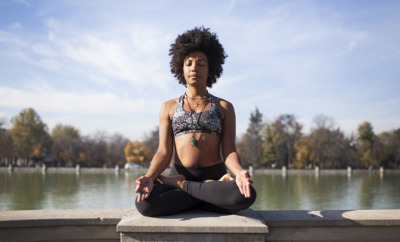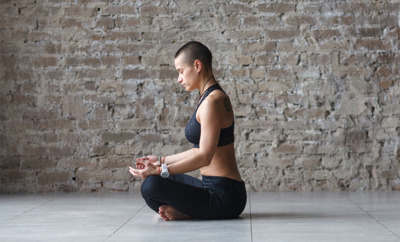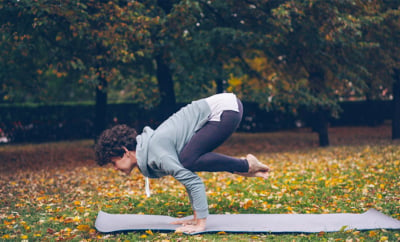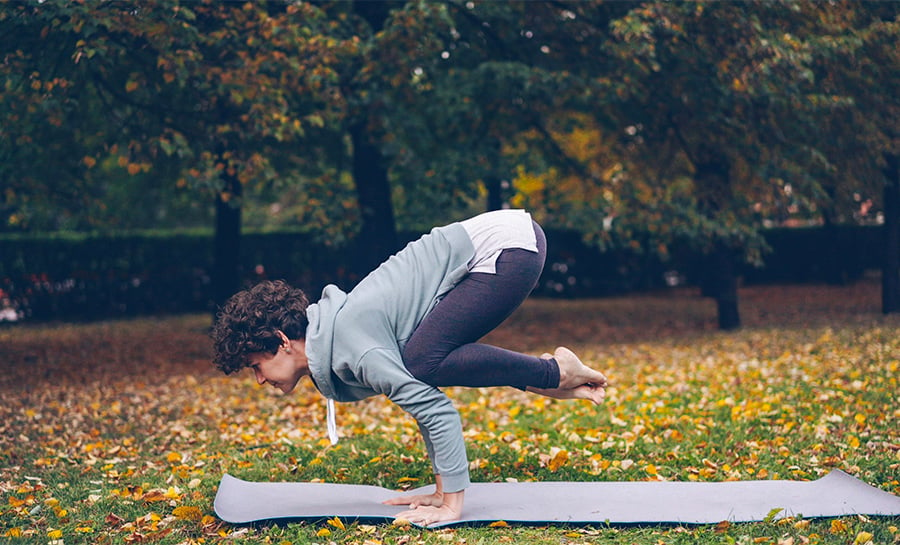Pratyahara Explained: The Fifth Limb of the Yoga Sutras and the First Step Toward Meditation

Pratyahara Explained
Wondering what all the stillness is about at the beginning and end of your yoga class?
You’re actually practicing the first step toward meditation: turning your attention within. This is called Pratyahara (or withdrawal of the senses) in the Yoga Sutras.
Where Do We First Learn About Pratyahara?
Written around 400 CE by an author and sage named Patanjali, the Yoga Sutras describes what yoga is, how to practice it, and the benefits of practicing.
The text shares eight techniques (referred to as the eight “limbs”) for arriving to enlightenment (a state of union) through the practice of yoga (unifying practices).
Many of us practice the third limb mentioned in the Yoga Sutras: Asana (what we know as postures today). Perhaps we also practice the fourth limb mentioned: Pranayama (energy-modifying breathing techniques).
Want to learn more about the Sutras? Check out 20 Particularly Relevant Yoga Sutras Translated and Explained
But how do we know when we are practicing the fifth limb mentioned in the Yoga Sutras (Pratyahara) translated as “turning inward” and “withdrawal from the senses?”
What Is Pratyahara and How Do You Practice It?
One translation of the Yoga Sutras describes the practice of Pratyahara as follows:
“The restraint of the senses occurs when the mind is able to remain in its chosen direction and the senses disregard the different objects around them to faithfully follow the direction of the mind. Then the senses are mastered.” (Yoga Sutras 2.54 – 2.55 as translated by T.K.V. Desikachar)
At the beginning of our asana practice, Pratyahara shows up when we actively decide to settle down. We choose to soften our gaze or close our eyes. And we rest our bodies in stillness for a brief time.
We find ourselves aware of our breath, heartbeat, mood, and thoughts. Some yoga teachers refer to these crucial moments as “centering.” We make a decision to restrain ourselves from looking around, from trying to make sense of what we hear, from tasting, smelling, and from moving about.
Without actively practicing Pratyahara by turning inward, you may struggle to establish and maintain a regular meditation practice.
Have you ever experienced a burst of restlessness when you were ready to begin your practice? But then you were asked to sit still by your teacher? Take heart that this burst is your moment to practice putting a gentle leash on the puppy of your senses to turn within.
In addition to stillness early in the asana practice, many yoga classes end with a resting pose (Savasana). In this posture, we close our eyes, surrender our bodies to gravity, and “let go.”
This process is a way to practice Pratyahara.
We rest our eyes. And we let sound vibrate around us without needing to decipher its meaning or change its volume. Also, we relax our need to coordinate or control our experience. So, when you skip Savasana, you skip a valuable opportunity to turn within.
How Should You Approach Your Pratyahara Practice?
Just as with any challenging yoga postures, we can cultivate Pratyahara with patience. No matter how long you’ve been practicing (be it days, years, or decades), it is more difficult to settle your attention on your inner world than it is to notice outer distractions.
It can be especially difficult when your inner world feels confusing, frustrating, exhausting, and otherwise something you wish to not see so clearly. Take heart again.
As you continue to practice the first four limbs of yoga, including moral restraints (Yamas), personal observances (Niyamas), postures (Asana), and breathing techniques (Pranayama), you hone your ability to look inward with steadiness and courage.
The Takeaway on Pratyahara and How It Influences Your Meditation Practice
When you dedicate time to practicing an inward focus (Pratyahara), you set the stage to practice the final limbs of yoga: contemplation (Dharana), meditation (Dhyana), and blissful union (Samadhi).
Without actively practicing Pratyahara by turning inward, you may struggle to establish and maintain a regular meditation practice.
Add the fifth limb of yoga into your physical practice by sitting still when you begin and resting in Savasana when you end. You will train your mind and tame your senses.


This Month's Letter
From the Editor
Monthly motivation and food for
thought from our founder.


























